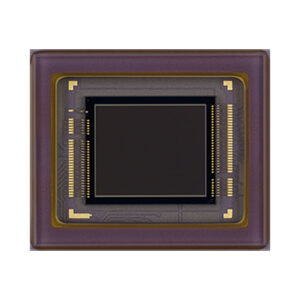Image Sensor
Showing all 4 results
- Image Sensor, Industrial Machinery, Sensor

Dust Camera PTC-1040 Dynamic Differential Image Observer – MSJ Creative research Laboratory
Image Sensor, Industrial Machinery, SensorDust Camera PTC-1040 Dynamic Differential Image Observer – MSJ Creative research Laboratory
Visualization of fine particles can be easily observed in combination with appropriate illumination.
Images from an ultra-compact, high-sensitivity, high-resolution monochrome CCD camera are processed with 10-bit (1024 gradations) high gradation for real-time differential processing.
The differential image effect enables identification of scratches and faint contrasts that are normally difficult to distinguish.
The camera, lens, and processing function board are integrated into one small unit measuring 90 x 140 x 40. The light weight (300g) makes it easy to carry and observe.SKU: n/a - Image Sensor, Industrial Machinery, Sensor

High Resolution Printed Still Image Device Image Checker DST-2500 – MSJ Creative research Laboratory
Image Sensor, Industrial Machinery, SensorHigh Resolution Printed Still Image Device Image Checker DST-2500 – MSJ Creative research Laboratory
The Image Checker DST-2500 monitors register marks, halftone dots, color tone, missing barcodes, and other print quality in gravure, form, label, and flexographic printing with high-quality still images.
Automatic monitoring of register misalignment
Automatic detection and alarm of misalignment beyond a set value.High-definition image display
High-density images of 1392 (width) × 1040 (height) are more than four times higher in quality than conventional models.SKU: n/a
Are you looking for a Image Sensor product?
When selecting Image Sensor for your company’s needs, there are several important points to consider during the comparison and evaluation process.
1. Resolution
Check the resolution of the image sensor, which indicates the number of pixels it can capture, to ensure it meets your image quality requirements.
2. Sensor Size
Consider the physical size of the sensor as it can affect factors like sensitivity to light and depth of field.
3. Pixel Size
Evaluate the pixel size of the sensor as larger pixels tend to perform better in low-light conditions.
4. Sensitivity and Dynamic Range
Assess the sensor’s sensitivity to light and its dynamic range, which indicates its ability to capture details in both bright and dark areas of the image.
5. Frame Rate
Check the frame rate of the sensor to ensure it can capture images at the desired speed for your application.
6. Noise Performance
Evaluate the sensor’s noise performance at different ISO settings, especially if you need high-quality images in low-light situations.
7. Spectral Response
Consider the spectral response of the image sensor, especially if you require specific wavelength sensitivity for specialized applications.
8. Interface and Compatibility
Check the sensor’s interface (e.g., USB, MIPI, LVDS) to ensure it is compatible with your imaging system or device.
9. Power Consumption
Assess the power consumption of the image sensor, especially for applications with limited power resources.
10. Temperature and Environmental Range
Ensure the image sensor can operate within the temperature and environmental range suitable for your application.

